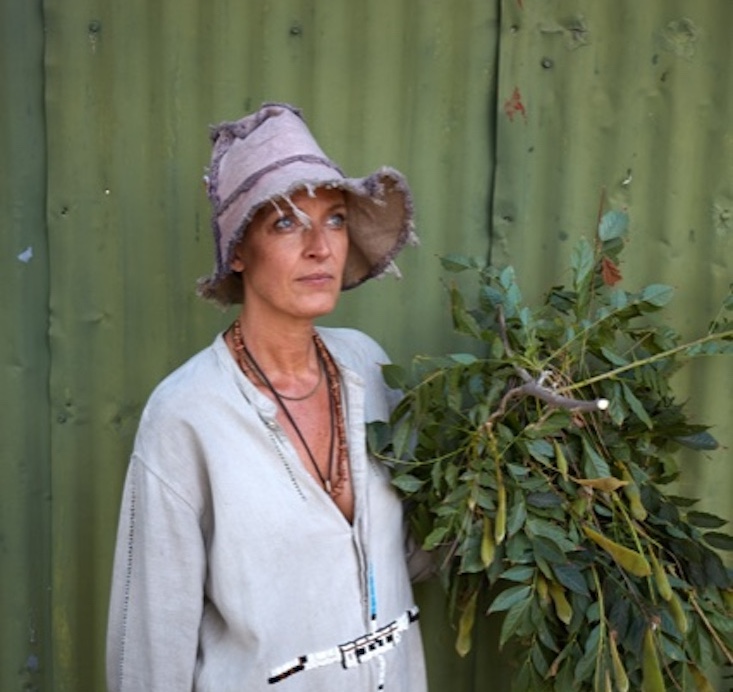Spring migratory birds are starting to arrive in the Northeast. While I come from a family of bird watchers (and also married one), I only recently started birdwatching myself. I would happily tag along on bird walks, but frankly I was more interested in gardening—preferring the flora to the fauna. Yet as I learn more about sustainable, nature-based gardening, I’ve come to appreciate how the two are inextricably linked. I got my first pair of binoculars (Athlon Midas G2—I highly recommend them) a few years ago. Now I am equally happy to catch a glimpse of a Blue-winged Warbler as I am to see the first blooms of bloodroot.

I was lucky to have great guides to help me get started. My husband instructed me how to spot: first, find the bird with your eyes, then bring the binoculars to them without taking your eyes off the feathery target. It was challenging at first, but I soon got the hang of it. I recently talked with avid birder and gardener Annie Novak. She is a board member of the American Bird Conservancy, co-founder of and farmer at Eagle Street Rooftop Farm, manager of the Edible Academy at the New York Botanical Garden, and author The Rooftop Growing Guide. She is also working on a book about birds and will be teaching an introductory class on birding for Atlas Obscura starting May 11. She shares her advice here.
Q: When did you start bird watching?

A: Both my parents took me birdwatching when I was a kid growing up in Evanston, Illinois, on beautiful Lake Michigan. My first field guide was a Petersons, with my dad’s annotations on the birds we saw. I started birdwatching in earnest in 2016, after seeing birds entrained in the Tribute in Light, a massive light installation illuminated every September 11th in lower Manhattan established to honor the lives lost when the Twin Towers fell.
Q: What do you love most about bird watching?
A: Birdwatching focuses my attention on the present moment, both where I am geographically and in time. I deeply appreciate the pause and wonder it adds to any given day. Birds are also tremendously charismatic, both across species and as individuals. I love their good company.
Q: What advice can you give for someone who wants to get started?

A: Birds are everywhere, so the best first step is to head outside (or look out a window) and start to notice them. I was astonished at how much I hadn’t seen just because I wasn’t conscientiously looking. When I started to take birding seriously, I also found serious birders to go out with. Their guidance helped me find better landscapes, test out various binoculars, and identify birds new to me. Many nature centers and conservation organizations offer bird walks, and I’m always pleasantly surprised at how collegial and welcoming those groups can be. The Feminist Bird Club and Birdabilty make birding even more accessible. Apps like EBird, Merlin Bird ID, and Sibley Birds are all fantastic for becoming familiar with the locations, sounds, and visuals of where and how to see birds.
Q: What can I do at home to lure birds?
A: I encourage you to move beyond the birdfeeder: birds need places to shelter, nest and play, too. If you have your own outdoor space, you can recultivate bird habitat. Before your home was there, a historic landscape of plants and insects supported the local and migratory bird populations. Do your research and find out what native plants best support birds near you.
If you are bringing more birds to your yard, you must make your windows bird-safe, too, or you’ll hurt the very birds you’re trying to help. The American Bird Conservancy provides easy resources to do this appropriately: Glass Collisions: Preventing Bird Window Strikes.
Q: Are there specific plants to grow? For example: if you plant it, they will come?

A: Across much of North America, oak trees are a fantastic place to start because of the hundreds of insects they attract—but fruiting trees and shrubs like hollies, junipers, raspberries and blackberries can all help too. The types of plants you choose depend on where you (and your birds!) live, but universally your best first step is to look up native plants to your region and make that your starting place. Pay attention to how they are planted, too—some birds like skulking in big clumps of shrubbery and others prefer open spaces. I learn my best landscaping lessons from taking photos of naturally occurring “birdy” spaces, and mirroring the design in my own yard. [To read more about Annie’s thoughts on native plants and birds, go here.]
Q: What can I do as an individual to protect birds?
Bird populations have plummeted across the Americas, including our most well-known birds, like the American Robin. This is due in no small part to large scale threats like habitat loss, but other contributors include easily addressable issues on the individual scale. The American Bird Conservancy does a fantastic job balancing civic actions like advocating on behalf of birds to your congressperson, and helping you find personal solutions, like deciding to keep your cat indoors. You can learn more about their work and how to participate at abcbirds.org.
See also:
- In Praise of Hulled Sunflower Seeds (the MVP of Bird Food)
- Ask the Expert: Edwina von Gal, on How to Help the Birds
- 10 Easy Pieces: Bird Watering Holes








Have a Question or Comment About This Post?
Join the conversation